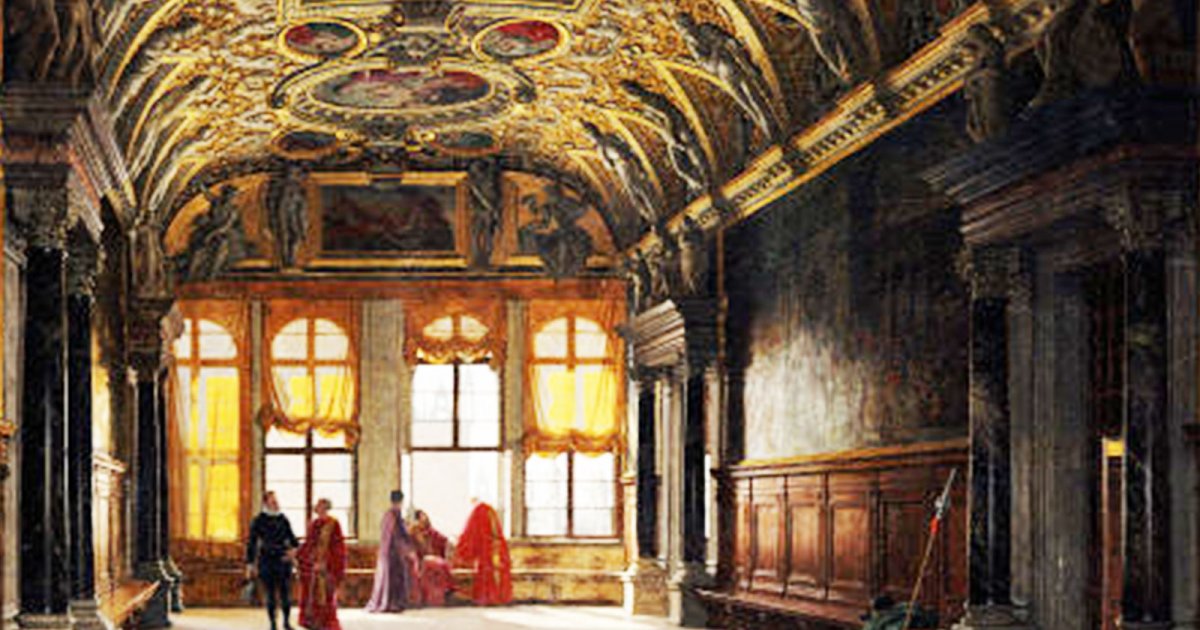DOGE'S PALACE, Golden Staircase And Hall With Four Portals
 Language: English / USA
Language: English / USA
If Venice had been ruled by a king, the Doge's Palace would have been the most luxurious royal palace of Renaissance Europe. Keep in mind that the ruling class at the time of the Republic of Venice had, over the centuries, developed a very effective "strategy of images" in which artwork had the precise role of political representation. The culmination of this strategy was during the 16th century, when Venice was considered "the most triumphant city of the universe".
Imagine being a diplomat or a visitor in that era, and going up the steps of the Scala d'Oro, or Golden Staircase, for the first time, which was the natural continuation of the Giants' Staircase: wouldn't you also have been dazzled by so much magnificence? This gorgeous staircase was built around the middle of the century based on the design of the previously-mentioned Sansovino. The stuccoes on a golden background were completed just a few years later.
Now pause the audio and go to the waiting room of the Senate and Signoria Halls.
In the reconstruction that followed the fire I already mentioned, the palace's most important halls were given grand, golden wood ceilings, called "alla veneziana", or Venetian-style, in which celebratory canvases were placed. All the best artists of the time were employed, but the responsibility for establishing the general stylistic orientation was entrusted to the greatest Venetian painter of the 1500s: Jacopo Robusti, also known as Tintoretto.
Once you've come up to the top of the Golden Staircase and crossed a square atrium, you've reached a vast room that served as an antechamber for the Senate and Signoria Halls. Although it is a simple waiting room, as the four monumental marble portals show, it has sumptuous ornamental decorations. The ceiling was designed by the great architect Andrea Palladio, while the walls show celebratory works, including the votive painting of the Doge Grimani, which was started by Titian.
FUN FACT: on one wall of the Floor of the Loggias between the ground floor and the noble first floor, you'll notice strange lions' mouths. They date back to the era of the doges, and were used by citizens to report crimes or illicit acts. They would put a piece of paper into the lion's mouth, which would then fall into a wooden box, all based on the office to which the complaint was addressed.



